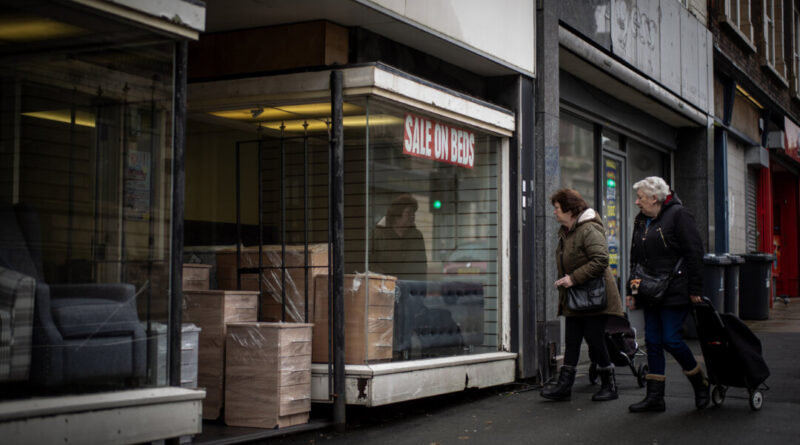Research shows beauty salons supplanting banks on British high streets in ‘dramatic’ transformation
Britons believe that their local high streets offer an inappropriate mix of stores, as revealed by a countywide poll.
The landscape of the British high street has changed “dramatically,” with research showing that beauty salons and unlicensed cafes have replaced banks and clothing shops.
Research from 2010 to 2023 highlights the changing dynamics of the high street, with nearly 2.5 new hairdressers or beauty salons opening every day over the last 13 years.
On the flip side, there has been a notable decrease in the number of banks available on high streets.
“In terms of disappearing businesses on our high streets, the number of banks has declined by over 60 percent since 2010 due to the rise of online banking, reducing the need for physical branches,” researchers explained.
Official data analysis on registered businesses in the UK revealed a decline in the number of clothing stores in urban areas, with about 3,600 fewer stores across major towns and cities.
Conversely, non-store retailing businesses through mail or internet orders have seen a significant increase.
“These types of businesses are less likely to be on the high street but their growth reflects the changing shopping behaviors, often to the detriment of high streets,” the research stated.
Additionally, the number of unlicensed restaurants and cafes has more than doubled, reflecting the rise of coffee and food culture in Britain.
This transformation in the high street is attributed to the surge of online shopping and banking, as well as financial pressures from the cost-of-living crisis on consumers.
Post-COVID-19 pandemic years have seen a surge in inflation and interest rates, adding financial strains on keeping high street shops open. This, coupled with the post-pandemic increase in remote working, has negatively impacted town and city centers,” the report highlighted.
Inflation and interest rate hikes have driven up business rates—a tax local authorities charge on non-residential properties—leading to an increase in shop vacancies and the decline of high streets.
“The unsustainable level of business rates has contributed to the decline of high streets across the UK,” said the British Property Federation in April.
Regions and Public Sentiment
Research on regional differences showed a north-south divide in the per capita number of takeaways.
Cities and towns in the north have more takeaway businesses per 10,000 people compared to those in the south.
Based on the poll, a majority of the public believes that the changing high street has resulted in an inappropriate mix of stores.
Over half of adults perceive their local high street as declining, with about a third stating that it “wasn’t changing much.”
Many adults feel there aren’t enough banks or clothing stores, while over 30 percent think there are too many charity shops and nail bars on high streets.
Interestingly, Conservative Party supporters are more likely to believe that high streets are declining compared to Labour and Liberal Democrat voters.





